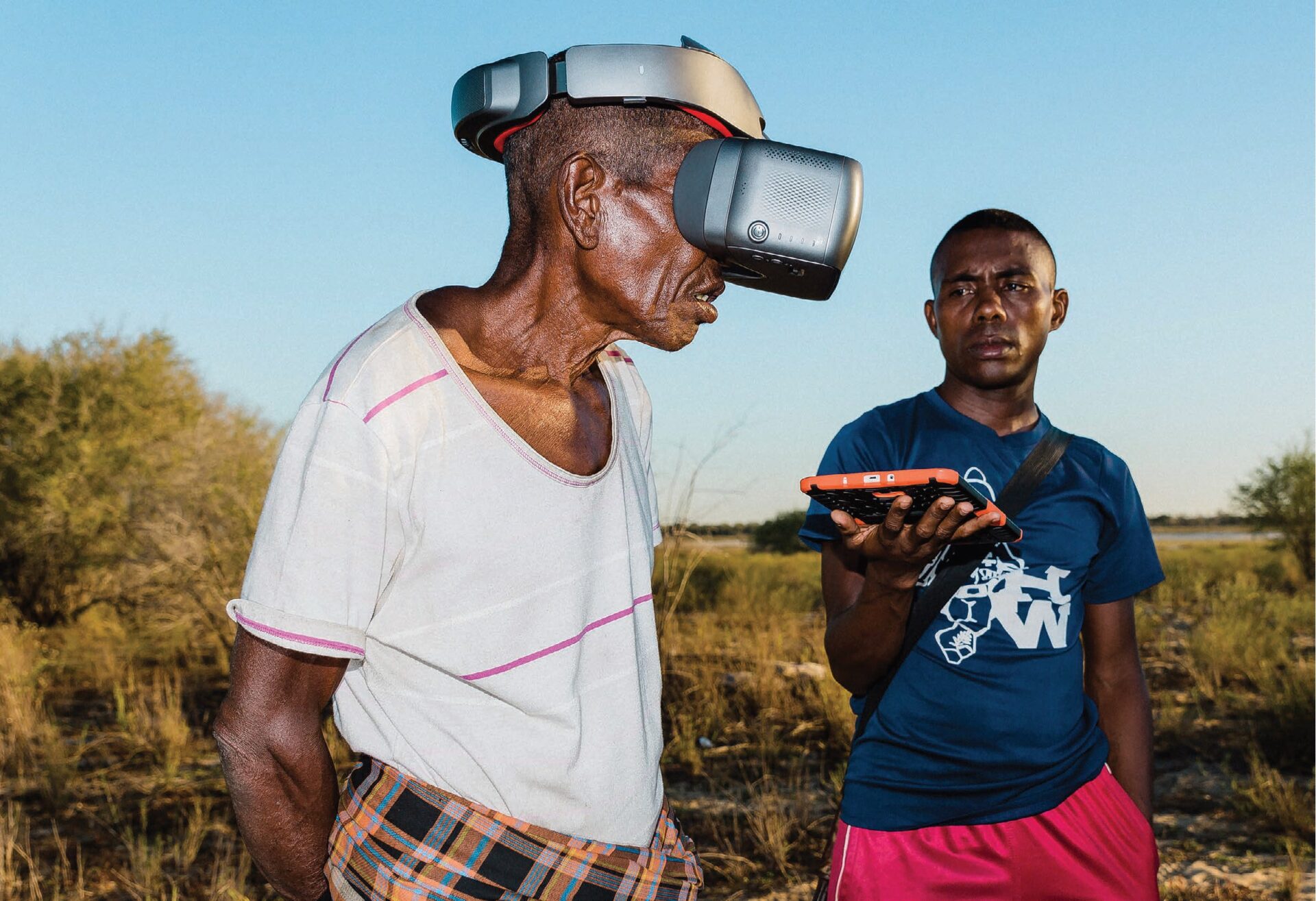Article /
PARTNERS IN SCIENCE: How the People Who Should Benefit from Research Are Increasingly Shaping How It Is Done

Introduction
Community-based participatory research has been gaining traction for the past two decades. It has become particularly important for research that involves indigenous and other populations who have been mistreated by scientists in the past.
Research on marginalized groups can be fraught, and working with tribal communities is especially complicated. A history of research abuses has left many Native Americans mistrustful of the scientific enterprise. In the past, investigators have used tribal members as unwitting participants in unethical and dangerous experiments.
Community participation has become the norm. The goal of such efforts is the co-production of research, in which the stakeholders who are supposed to benefit from a strand of research become active partners in conducting it. Read more about the principles of transdisciplinarity, co-production and co-exploration here. You can also read this guide on how to establish transdisciplinary learning processes and co-production of knowledge. Scientists from disciplines as varied as archaeology, public health and climate change have embraced the approach, working with community members on many different aspects, from formulating study questions and design, to doing experiments and analysing and reporting results.
Nature talked to three groups that have built successful co-produced projects. Their experiences reveal the challenges and rewards that come with the open and collaborative exchange of ideas. The work veers away from the standard outputs of science, such as talks and papers, and expands the idea of what it means to be a scientist and a collaborator.
Click here to read the full article*This article was written by Cassandra Willyard, Megan Scudellari, and Linda Nordling, and published in Nature. weADAPT hosts a range of articles relating to the co-production of climate information, which can be accessed below:
- Building resilience in southern African cities,
- Receptivity and judgement,
- Co-producing climate knowledge,
- Co-producing climate information for Windhoek decision making.
*The key messages from the document are provided below. See the full text for much more detail.
Future Resilience for African Cities and Lands in Lusaka
Sub-Saharan Africa’s urban population is projected to double in the next 25 years. And climate change is expected to hit the continent particularly hard. But although most African governments are aware of climate change, many efforts to inject climate science into city planning have had limited success. If they could just get more accurate information, they could better prepare for what lies ahead.
“solving climate-related challenges in developing countries requires more than just climate predictions” – Chris Jack, climate modeller at the University of Cape Town
FRACTAL and knowledge co-production
The Future Resilience for African Cities and Lands (FRACTAL) programme is a co-production effort designed to improve the alignment of research and policymaking in nine southern African cities. It:
- tries to address this alignment by setting out to understand what cities actually need;
- works with city planners and local scientists to co-produce the missing knowledge;
- hosts ‘learning labs’, a gathering of city planners, policymakers and climate scientists intended to improve climate-related decision-making in the country. These happen in each city every six months and have produced a list of burning issues that residents of each area are most concerned about.
- also studies how decisions are made in the cities.
- its stakeholders have produced climate-risk narratives for each of the cities, based on different climate-change scenarios described by international models.
- helps people around the region to share knowledge and experience.
The case of Lusaka
In Lusaka, the burning issues include flooding and the unregulated use of groundwater, as well as poor sanitation, waste management and erratic water supplies.
The Lusaka scenarios all involve a warmer city, but the rainfall varies: in one scenario it is drier than now; in another, the rainfall is unchanged; and in a third, there is greater variability in rainfall, with prolonged periods of drought and heavier downpours. These are all increasing diaster risk in the city.

Challenges
Decisions that influence cities’ climate resilience often fall outside the remit of local legislators.
Investments in large infrastructure projects in Africa, such as power stations and water pipelines, are sometimes made by development banks and global agencies, meaning that city authorities have limited involvement.
The difficulty also lies in finding ways to capture and communicate the knowledge being produced by the project.
“The end product of co-production done well is almost in the intangible,” says Jack. “It’s in the fact that you have connected people and started those discussions.”
Food Resource Equity and Sustainability for Health with the Osage Nation
Fresh fruit and vegetables are hard to come by in Osage County. Since the 1970s, the Osage people have increasingly relied on canned and processed foods that are high in salt, fat and sugar.
Red Corn and other tribal leaders hoped that providing locally grown fresh foods would yield obvious health benefits, but they weren’t equipped to measure those benefits themselves. So, they reached out to Jernigan at the University of Oklahoma Health Sciences Center, who is a member of the Choctaw Nation.
Pilot Study
- As a first step, Jernigan proposed launching a pilot study to work out what the community actually wanted:
- The team surveyed everyone from community members to leadership.
- People seemed most interested in the idea of community gardening.
- People also wanted to increase the desire for healthy foods.
- Jernigan worked with the Osage to design a community programme aimed at getting young children and their families to eat more fruit and vegetables.
- Food Resource Equity and Sustainability for Health, or FRESH, launched in January.

FRESH Study
- The team came up with new, healthier menus for a programme that provides care for children aged 3–5 from low-income backgrounds.
- The researchers also provided the schools with demonstration gardens.
- Each week, the teachers spend 90 minutes telling stories about food, working with the children in the garden, and conducting a simple cooking lesson.
- On Fridays, the children take home a healthy meal kit to prepare with their families.
- Their parents take part in a 15-week online workshop.
The FRESH study will look at: whether the interventions actually increase children’s consumption of fruit and vegetables, their willingness to try them, health measures, such as body mass index and blood pressure, in the families.
|
The cultural elements are important. Parents are encouraged to attend a monthly family night, where they talk about:
There’s a lot of realization about the connections between language, identity and indigeneity. |
Challenges
Jernigan often has to strike a balance between scientific best practice and the community’s needs and desires. The researchers couldn’t use a true control group. It wouldn’t be ethical to deny some of the participants the resources that the study provides. Instead, the team adopted a ‘wait-list control’ design.
The Morombe Archaeological Project with Vezo, Masikoro, and Mikea communities
Douglass directs the Morombe Archaeological Project (MAP), which is reconstructing the impact of human settlement on the Velondriake area. With the MAP team, Douglass asks members to participate in almost every aspect of research: experimental design, fieldwork, sorting and analysing material, interpretation and presentation. A region’s citizens can and should have a choice about how their area is represented and what research is valuable to them. For Douglass, including locals in research was a priority:
In the team
- Besides Douglass, others are members of the region’s five ancestral clans, and hail from three local communities: Vezo fishers, Masikoro farmers and herders, and Mikea foragers.
- Few have completed secondary school, and many cannot read or write.
- Yet Douglass considers them the experts, “and great field researchers”, she says.
- Leading the daily operations for many of the MAP projects is George ‘Bic’ Manahira. Manahira is from Morombe and speaks five languages.
In the method
The intensive, co-production research effort exemplified by MAP also makes for better science. The Velondriake women, for example, have local ways of describing taxonomic relationships between animals. Prompted by that knowledge, MAP now includes a project exploring how the classification system affects the ways in which locals choose to harvest species or leave them alone.
“We go in with our own biases when we’re not open to learning from community members.”
In co-authorship and publication
This is the next step in building this collaboration. Several of Dougless’ published papers acknowledge team members and their unique experience, they do not list them as co-authors.
Challenges
- According to criteria for a journal, certain people should not be put on a publication as an author.
- Team members do not have regular Internet access.
- Douglass lacks the funds to fly them to Pennsylvania to work in person.
- Such funds would be hard to obtain: grant reviewers commented that Douglass’s project budget for paying locals — about US$200 per month, a living wage in the area — was unreasonably high.
This article was writtem by Cassandra Willyard, Megan Scudellari, and Linda Nordling, and published in Nature, vol 562, pp. 24-28.
Suggested citation
Willyard, C., Scudellari, M., and Nordling, L., Partners in Science. Nature 562, 24–28 (2018).
Related Articles
- FRACTAL: Future Resilience for African Cities and Lands
- FRACTAL website
- Improved Waste Management through Public-Private Partnerships in Lusaka
- Building Disaster Risk Reduction (DRR) in the City of Lusaka, Zambia
- Designing Knowledge Coproduction for Climate and Development
- Indigenous Peoples and Climate Change: Emerging Research on Traditional Knowledge and Livelihoods
- Co-producing climate knowledge – Great in theory, but how about practice?
- A compilation of good practices, tools and available data collection initiatives for the use of local, indigenous and ...
- Inspiring Climate Action in African Cities
- The Tandem framework: a holistic approach to co-designing climate services
- Embracing the uncomfortable silences in climate information exchange
- The CARIAA Research-into-Use (RiU) Learning Guide
- Transdisciplinarity, co-production, and co-exploration
- A guide to Effective Collaboration and Learning in Consortia
- Building resilience in southern African cities
- Receptivity and judgement
- Co-producing climate information for Windhoek decision making
